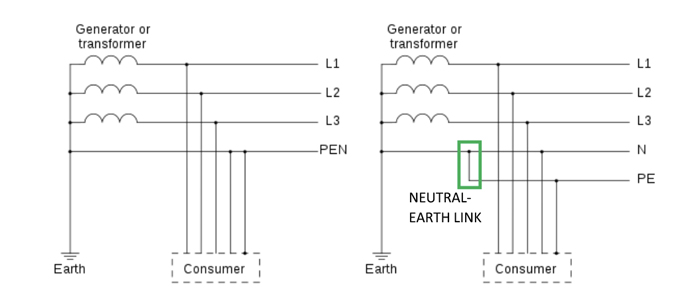- +61 7 3374 2877
- Email Us
The amenity electricity provides to societies can’t be understated; likewise, electricity’s ability to cause harm to people also cannot be understated. In Australia we have a fondness for the MEN system of low voltage supply, but is there an alternative method that offers some advantage for safety?
Access to reliable low voltage electricity is essential to developing societies across the world and the human consumption of electricity is on the rise. Electricity however is a fundamentally hazardous substance that is responsible for great harm when handled incorrectly or unexpectedly. SafeWork NSW cites electrocution as the second leading cause of death in the construction industry. Electric shock can also cause significant harm and contributes to many secondary effects such as falling off a ladder; with falls from height being the major cause of fatality in construction. Other effects include lost time, ongoing medical problems and nuisance shocks and tingles which require significant investigation to solve, and often great difficulty eliminating.
The RCD
The introduction of residual current devices (RCD) in 1991 led to a steep decline in the number and severity of electrical shocks. However, RCDs alone cannot detect and isolate faults where the shock victim becomes in circuit with the active and neutral, or insufficient out of balance current flow to earth means the RCD cannot operate. The RCBO which includes an overcurrent element is also unlikely to ensure safety of the shock victim due to relatively high pickup current required to isolate the circuit under fault. For this reason and because there are many older residential installations still without RCDs installed, there has been a spate of workers crawling through roof spaces and under floors receiving electric shocks which unfortunately in too many instances result in fatality.
This being the case, RCDs while having a significant impact on electrical safety are not perfect and certainly not the ‘silver bullet’ for all LV electrical problems. This next electrical problem may
well be as significant an issue that prompted the 1991 mandate for RCD installation.

The High Resistance Neutral
In Australia and particularly at the consumer level, precisely where AS/NZS 3000 ‘Wiring Rules’ is aimed, we prefer the electrical LV system colloquially termed the MEN system. It’s an odd term because it refers to Multiple Earthed Neutral which is very rare and problematic at the consumer level. The MEN system is employed by the Distribution Network Service Provider (DNSP) where they earth the neutral conductor in multiple locations. What we employ in Australia is best described by the IEC 60364 series of standards using the two letter codes TN, TT and IT where the MEN system is most closely defined by the TN earthing system. To be abundantly clear, the system we have in Australia at consumer level is the TN-C system, however, we create a TN-C-S system by installing a Neutral-Earth link within the consumer switchboard.
The TN-C system is typically how the DNSP reticulates LV through our streets and residential developments. It’s quite rare for the DNSP to reticulate a Protective Earth (PE) with the active and neutral conductors. It is only once the service mains enter a residence, and once the Neutral-Earth link is installed that the system truly represents the TN-C-S system.
So, what’s the problem? The main issue with our Australian MEN system is the increasing incidence of the high resistance neutral problem. This coupled with the trend away from metallic (water and gas) to non-conductive services means the redundancy of the system is degrading and fast. Almost certainly in this day any new residential development would be established with non-conductive water or gas services to the home. Therefore, a high resistance neutral supply side of the Neutral-Earth link will, under normal load conditions, create a voltage rise on the neutral as a larger proportion of the load current flows through earthing system of the consumer’s installation. While the high resistance neutral problem is often associated with a broken neutral connection, this need not be the case as even the physical or geographic nature of the installation can lead to a voltage rise on the earthing system. So in other words the neutral does not need to break for this problem to create the conditions for an electric shock to occur, even a very long service connection may cause a neutral voltage rise due to the higher return circuit impedance.